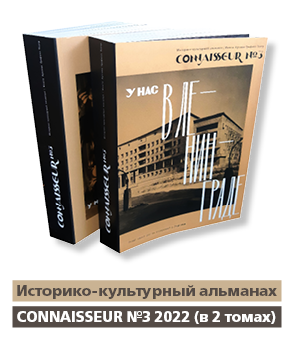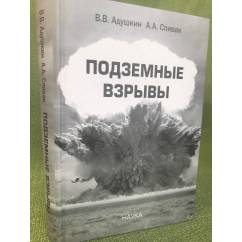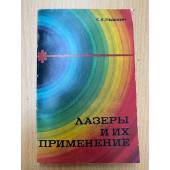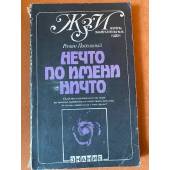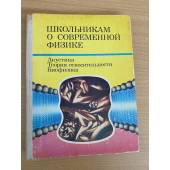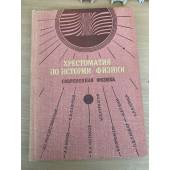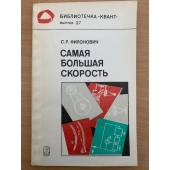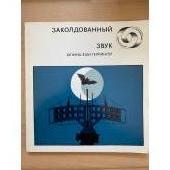
Cart
0
Product
Products
(empty)
No products
Free shipping!
Shipping
0,00 €
Packing fee
0,00 €
Total
Product successfully added to your shopping cart
Quantity
There are %d items in your cart. There is 1 item in your cart.

Categories
- Albums (2085)
- Antique (before 1850) old books (before 1941) (584)
- Art and culture (5360)
- Audiobooks, compact discs (CD) (121)
- Autographed books (248)
- Board games (19)
- Books for school (4689)
-
Books in foreign languages
(8487)
- Books in Altai (4)
- Books in Azerbaijani (47)
- Books in Belarusian (46)
- Books in Bulgarian (2)
- Books in Dutch (2)
- Books in English (6656)
- Books in Estonian (10)
- Books in Finnish (7)
- Books in French (43)
- Books in Georgian (37)
- Books in Greek (2)
- Books in Hungarian (6)
- Books in Italian (12)
- Books in Japanese (7)
- Books in Karelian (3)
- Books in Kyrgyz language (6)
- Books in Latvian (46)
- Books in Lithuanian (7)
- Books in Norwegian (4)
- Books in Polish (14)
- Books in Portuguese (2)
- Books in Slovak (2)
- Books in Spanish (17)
- Books in Swedish (3)
- Books in Tajik (34)
- Books in the Adyghe language (3)
- Books in the Balkar language (8)
- Books in the Bashkir language (73)
- Books in the Buryat language (5)
- Books in the Kalmyk language (8)
- Books in the Karachai language (1)
- Books in the Komi language (5)
- Books in the languages of the peoples of the Caucasus (7)
- Books in the Mari language (17)
- Books in the Mokshan language (1)
- Books in the Mordovian language (3)
- Books in the Nogai language (1)
- Books in the Tatar language (101)
- Books in the Udmurt language (10)
- Books in the Yakut (Sakha) language (27)
- Books in the Yarzyan language (2)
- Books in Ukrainian (976)
- Books in Uzbek (9)
- Chuvash language books (29)
- Kazakh language books (8)
- Business. Economy (1622)
- Calendars (41)
-
Children's Literature
(10395)
- Books for parents (354)
-
Children's creativity and leisure
(924)
- Children's games. Experiments and experiments (16)
- Coloring pages (12)
- Crafts, cooking for children (6)
- Drawing for children (11)
- Make with your own hands (29)
- Modeling, application (7)
- Organization of children's parties (2)
- Origami, paper craft (5)
- Puzzles, crosswords for kids (8)
- Questionnaires, diaries, albums (1)
-
Educational and educational literature for children
(1741)
- Attention. Imagination. Memory (27)
- Basic security (4)
- Creative development (46)
- Foreign languages (102)
- General development. Manuals, reference books (83)
- General preparation for school (45)
- Introduction to the outside world (69)
- Logic. Thinking (32)
- Math and counting (43)
- Teaching reading and writing (91)
-
Educational literature for children
(772)
- Biographies for children (37)
- Books for boys (21)
- Books for girls (19)
- Culture, art, religion (48)
- Encyclopedias, reference books and other educational literature for children (182)
- History for children (86)
- Nature and the environment (244)
- Psychology. Etiquette (12)
- Science, technology, transport (54)
-
Fiction for children
(4344)
- Books for kids (111)
- Books on cartoons and films. Comics (81)
- Detectives and adventures for children (193)
- Foreign prose for children (307)
- Myths. Legends. Historical prose for children (69)
- Poetry for children (147)
- Russian prose for children (417)
- Science Fiction, Fantasy and Horror for Kids (118)
- Tales (503)
- Tales and stories about animals (144)
- Soviet children's books (902)
- Toy books (40)
- Collected works. Multivolume editions (3675)
- collection sets (53)
- Comics (53)
- Cookery (1374)
- Dictionaries. Phrasebooks (1324)
- Electronic books (10)
- Encyclopedia (1020)
- Engravings (7)
- Feng Shui (112)
- Fiction (84413)
- German and Germany (35741)
- gramophone records, vinyl (131)
- Guides (2058)
- Healthy lifestyle. Healthy eating. Fitness (1806)
- History (9767)
-
House. Life. Leisure.
(7693)
- Dom. Life (3170)
- Erotic books, books about sex, kamasutra (193)
- Hobby. Leisure (1663)
- Reference Literature (2170)
-
Sport
(956)
- Aerobics. Fitness. Yoga. Dancing (31)
- Board games (158)
- Combat and martial arts (82)
- Extreme sports (12)
- Gymnastics. Light and weightlifting (8)
- Olympic Games (13)
- Other sports (51)
- Physical culture and sport (73)
- Self-defense. Survival (20)
- Sport games (23)
- Tourism (85)
- Water sports (28)
- Winter sports (18)
- Kits (different books) (139)
- Kits (magazines) (60)
-
Magazines and newspapers
(2550)
- Architecture, interior (9)
- Astrology, esotericism (35)
- Bills (233)
- Calendars 2020 (1)
- Calendars 2021 (3)
- Cars, hunting, fishing (15)
- Celebrities, ZhZL (33)
- Children's magazines (12)
- Computer, technology (4)
- Cooking and Recipes (25)
- Crosswords, Scanwords (2)
- Editions with TV program (133)
- Entertainment magazines (7)
- Fashion, style, beauty (17)
- History (111)
- Hobbies, interests (104)
- Home, family, leisure (74)
- House, garden, vegetable garden (34)
- Literature, theatre, music (235)
- Magazines for men (211)
- Magazines for parents (2)
- Magazines for women (108)
- Medicine, health (153)
- Religion (10)
- Russian press abroad (480)
- Science, technology, fantasy (168)
- Sewing, knitting, needlework (8)
- Society, politics (636)
- Special Editions (57)
- Travel, countries (14)
- Maps, atlases (671)
- Military business. Weapons. Special services (4061)
- Miniature books (148)
- Music. Sheet music (1040)
- Postage stamps (92)
- Postcards (191)
- Posters (37)
-
Professional, educational literature
(24599)
-
Applied sciences. Technique
(2517)
- Agriculture. Veterinary medicine (41)
- Architecture (360)
- Chemical industry (104)
- Construction (445)
- Design (136)
- Energy (68)
- Engineering. Instrumentation (184)
- Food industry (19)
- Jewellery (22)
- Life safety (46)
- Light industry (39)
- Metallurgy (28)
- Mining (83)
- Nanotechnologies (5)
- Oil and gas industry (53)
- Other industries (101)
- Polygraphy (8)
- Radio engineering. Electronics. Communication (263)
- Technical Sciences (330)
- Technology of production (100)
- Timber and wood chemical industry (13)
- Transport (183)
-
Computer Literature
(472)
- Administration. Information security (5)
- Computer for … (16)
- Computer networks. Internet (23)
- Databases (8)
- Design systems (CAD/CAM) (1)
- General questions (41)
- Graphics, design, multimedia, games (27)
- Hardware (4)
- Informatics (27)
- MS Office. Microsoft office programs (11)
- Operating systems (12)
- PC work for beginners (18)
- Programming languages and environments (37)
- Humanities (8812)
-
Legal Literature
(993)
- Civil law (54)
- Civil procedural law. Judiciary (8)
- Comments (12)
- Constitutional law. Administrative law (30)
- Criminal law (40)
- Criminology. Criminalistics (37)
- Customs law (8)
- Financial law (11)
- International law (34)
- Labor law. Social security law (9)
- Land law. Environmental law (3)
- Law enforcement agencies (23)
- Law in general. History and theory of state and law (29)
- Other branches of law (23)
- Regulatory acts. Reference literature (19)
- Right in everyday life (17)
- Textbooks and teaching aids (43)
- Workshops and practical aids (6)
-
Medicine and Health
(2411)
- Applied Medicine (43)
- Clinical Medicine. Internal Medicine (21)
- Cosmetology (20)
- Fundamentals of Medicine. Healthcare System (26)
- General pathology. General therapy (19)
- Narcology (12)
- Nervous system (29)
- Other branches of medicine (89)
- Pediatrics (51)
- Pharmacology. Toxicology (21)
- Popular and alternative medicine (1119)
- Psychiatry. Neuropathology. Sexopathology (71)
- Surgery (18)
- Monographs (1110)
- Natural sciences. Mathematics (2229)
- Social Sciences (5562)
-
Applied sciences. Technique
(2517)
- Religion. Esotericism (6378)
- Russian Abroad (books published abroad) (2599)
- Russian language (774)
- Russian language for children (Textbooks) (155)
- Soviet books until 1992 (12966)
- Yoga Books (158)
- Show All
More info
R e e n s e n t s: acad. E. I. Shemyakin Dr. Ph.-M. Sciences V. N. Rodionov On the first and fourth sides of the binding there are photographs of the explosion of a chemical explosive charge weighing 5000 tons at different points in time. Approved for publication by the Scientific Council of the Institute of Geosphere Dynamics of the Russian Academy of Sciences Format 70x100 1/16. Offset printing The monograph summarizes for the first time the results of fundamental research obtained during underground explosions. The effects of an underground explosion are considered in a comprehensive manner, starting with the formation of a camouflage cavity and the formation of zones of irreversible behavior of the medium to determining the time for the release of explosion products from the camouflage cavity into the atmosphere. The mechanical effects of an underground explosion and changes in the properties of the medium as a result of explosive loading are discussed. The characteristics of the excavation action of underground explosions, the influence of the structural-tectonic structure of the medium on the patterns of its destruction and the formation of compression waves in the near zone and at a considerable distance from the source are given. For scientists and geomechanics specialists involved in solving engineering problems in mining and underground construction. CONTENTS Introduction 3 Chapter 1 The main effects of the mechanical action of an underground nuclear explosion 13 1.1. Classification of underground nuclear explosions 15 1.2. The initial stage of development of an underground nuclear explosion 17 1.3. Boiler cavity and compression wave 20 1.4. Characteristics of rock destruction zones during underground explosions at the Semipalatinsk test site 32 1.5. Granulometric composition of the destroyed environment 41 1.6. Modeling of explosions as a research method 45 Chapter 2 Excavation action of nuclear explosions 53 2.1. Experience in conducting nuclear explosions for ejection 55 2.2. The method of physical modeling of explosions for ejection 72 2.3. Dependence of funnel size on explosion energy 113 2.4. Dependence of the excavation action of a nuclear explosion on the gas-forming properties of the rock 117 2.5. Optimum and maximum depth of explosion for ejection 120 2.6. The rate of release and the time of gas breakthrough into the atmosphere 122 Chapter 3 nuclear explosions 127 3.1. Results of observation of nuclear explosions loosening 131 3.2. Formation of failed funnels 139 3.3. Comparison of the model with field data 149 3.4. Dimensions of failed funnels 156 3.5. Estimation of the energy of a nuclear explosion by the size of the collapsed funnel 161 3.6. The size of the hills of swelling 164 3.7. Time of release of boiler gas into the atmosphere during loosening explosions 173 Chapter 4 Seismic action of large-scale underground explosions 175 4.1. The main stages in the development of seismology of underground explosions 179 4.2. Radiation and features of the propagation of seismic waves during an underground explosion 184 4.3. Seismic waves of underground nuclear explosions in the regional area of the Semipalatinsk test site 190 4.4. Determination of the energy of underground nuclear explosions by the parameters of the Rayleigh wave 203 4.5. Seismic action of underground nuclear explosions at the Novaya Zemlya test site 216 4.6. Observations of regional and teleseismic waves at the seismic station Borovoe (BRVK) 227 4.7. Features of the seismic effect during an explosion in an air cavity 244 4.8. Seismic of mass industrial explosions in quarries 253 4.9. Effect of seismic waves on buildings and structures 261 Chapter 5 Influence of an underground nuclear explosion on filtration characteristics environment and hydrogeological regime 269 5.1. Structural and filtration characteristics of rock mass disturbance 271 5.2. Methodology for determining the filtration properties of a rock mass destroyed by an explosion 274 5.3. Changes in rock and mass permeability as a result of an explosion 280 5.4. Assessment of the structural characteristics of the rock mass based on the results of filtration tests 290 5.5. Influence of an underground nuclear explosion on the movement of groundwater 297 Chapter 6 Results of experimental modeling of explosive deformation solid medium 319 6.1. Compression wave of a camouflage explosion 321 6.2. Compression wave of a shallow explosion 330 6.3. Explosion in the air cavity 353 6.4. Influence of the initial charge energy density on the deformation of a solid medium 358 6.5. Influence of the initial stress on the nature of the destruction of a solid medium by an explosion 367 6.6. Explosion in a condensing medium 384 6.7. Peculiarities of the explosion of a cylindrical charge 390 Chapter 7 Peculiarities of deformation and destruction during an underground explosion with artificial and natural heterogeneities 397 7.1. Peculiarities of deformation of a solid medium during shielding of an explosive source by an unfilled slot 399 7.2. Destructive action of an underground explosion in the presence of a slit screen 404 7.3. Patterns of deformation and destruction of the medium when the blast wave enters the free surface 412 7.4. Influence of the initial voidness of the medium on the destructive effect of the explosion 418 7.5. Basic ideas about the deformation of block media 423 Chapter 8 Influence of the structural-tectonic structure of the medium on the mechanical effects of an underground nuclear explosion 429 8.1. Geological features of the mountains of the Semipalatinsk test site 431 8.2. Inconsistent shape change of the structural blocks of the medium during an explosion 447 8.3. Peculiarities of block medium deformation during underground explosion 455 8.4. Computational model of deformation of a block medium 472 8.5 On the size of the zone of local irreversible manifestations in an explosion in a structurally inhomogeneous medium 476 Chapter 9 Emission of boiler gas into the atmosphere during camouflage nuclear explosions 483 9.1. Calculation of gas filtration from the cavity through the destroyed rock 486 9.2. The choice of the initial state of the filtered gas 494 9.3. Filtration characteristics of destroyed rock 500 9.4. Influence of the scale of the explosion and the gas content of rocks on the time of the beginning of the release of boiler gas into the atmosphere 509 9.5. Minimum and minimum allowable depth of camouflage explosion 516 9.6. Dynamics of the outflow of boiler gas into the atmosphere 521 9.7. Influence of broken rock porosity on gas output 525 9.8. Influence of the collapse of the cavity on the release of gases 528 9.9. Influence of engineering-geological conditions on the release of gases 533 Chapter 10 Excavation effect of chemical explosive explosions 537 10.1. Explosion for ejection by a concentrated charge 539 10.2. Explosion for ejection by a linear charge 554 10.3. Comparison of the efficiency of the excavation action of nuclear and chemical explosions 559 Conclusion 563 References 567
Data sheet
| ISBN | 978-5-02-034263-7 |
| Publisher | Наука. Москва. 2007 |
| Bookbinding | 579 стр. твердый переплет |
All author\'s books:
Seller Info/Map |
Seller type: Company (business)
Подробнее
Book market
ISIA Media Verlag UG (L)
Volbedingstr. 2 A2-03
Leipzig, 04357
Germany
03416870612

Volbedingstr. 2 A2-03
Leipzig, 04357
Germany
03416870612




